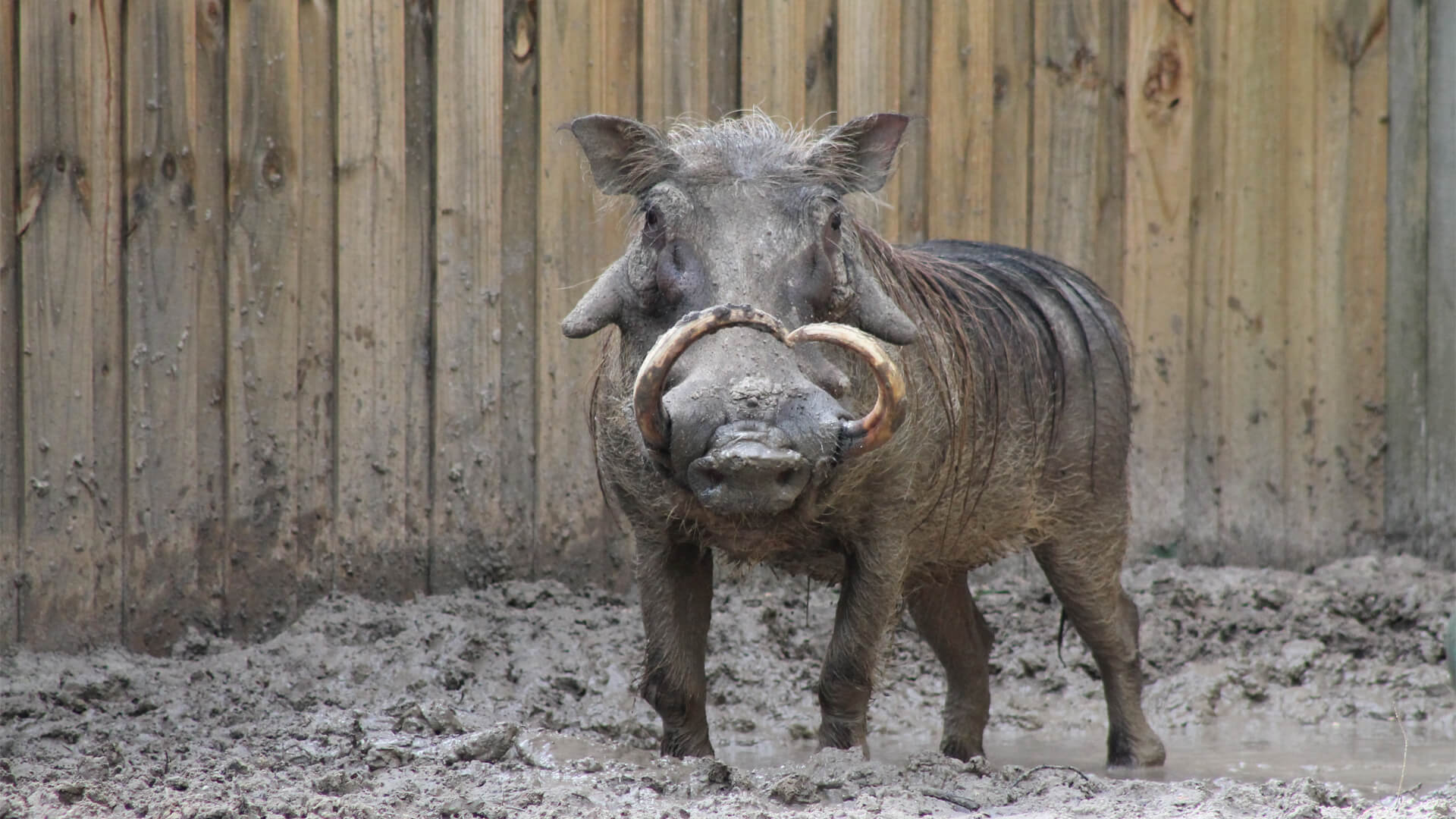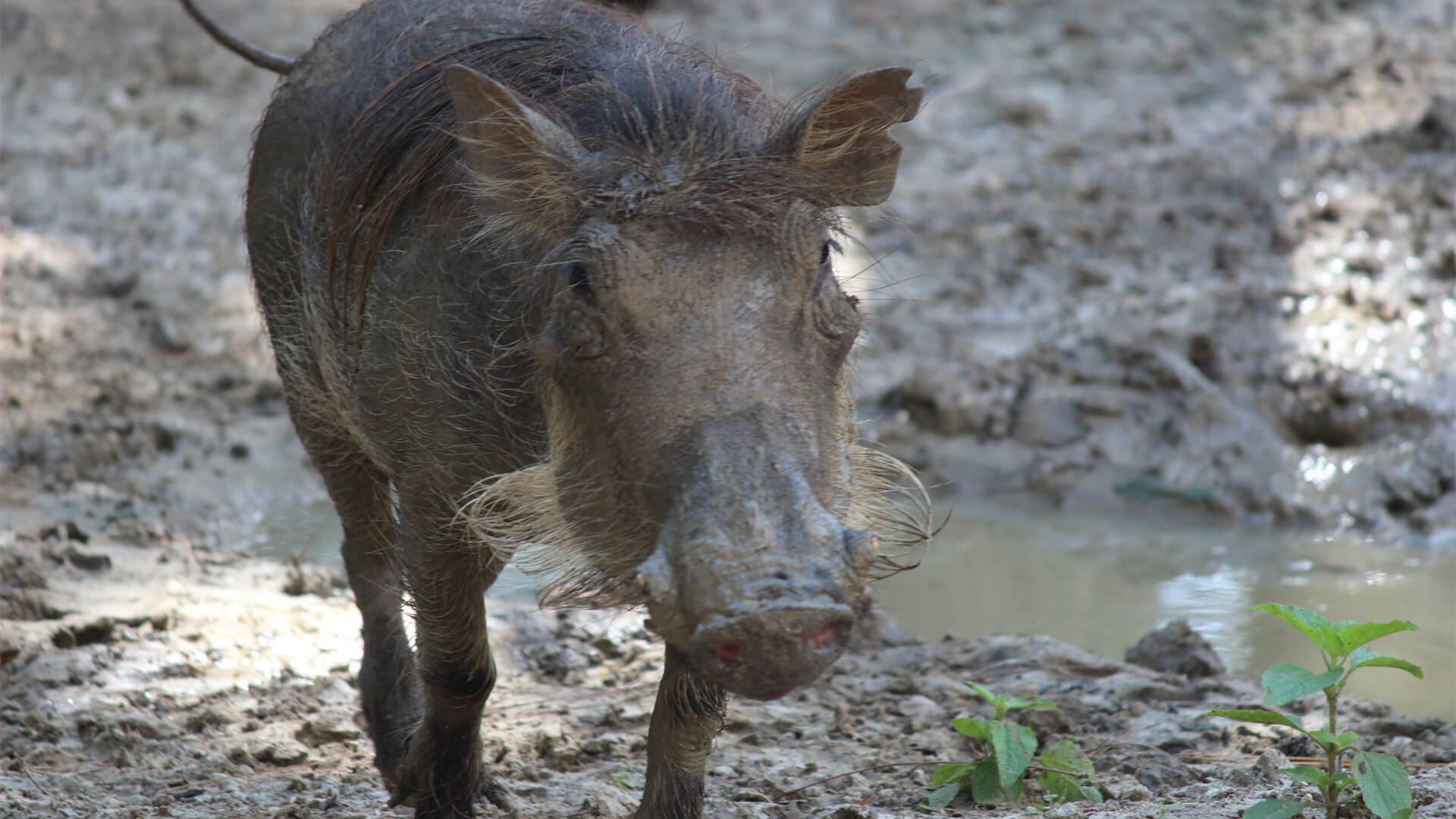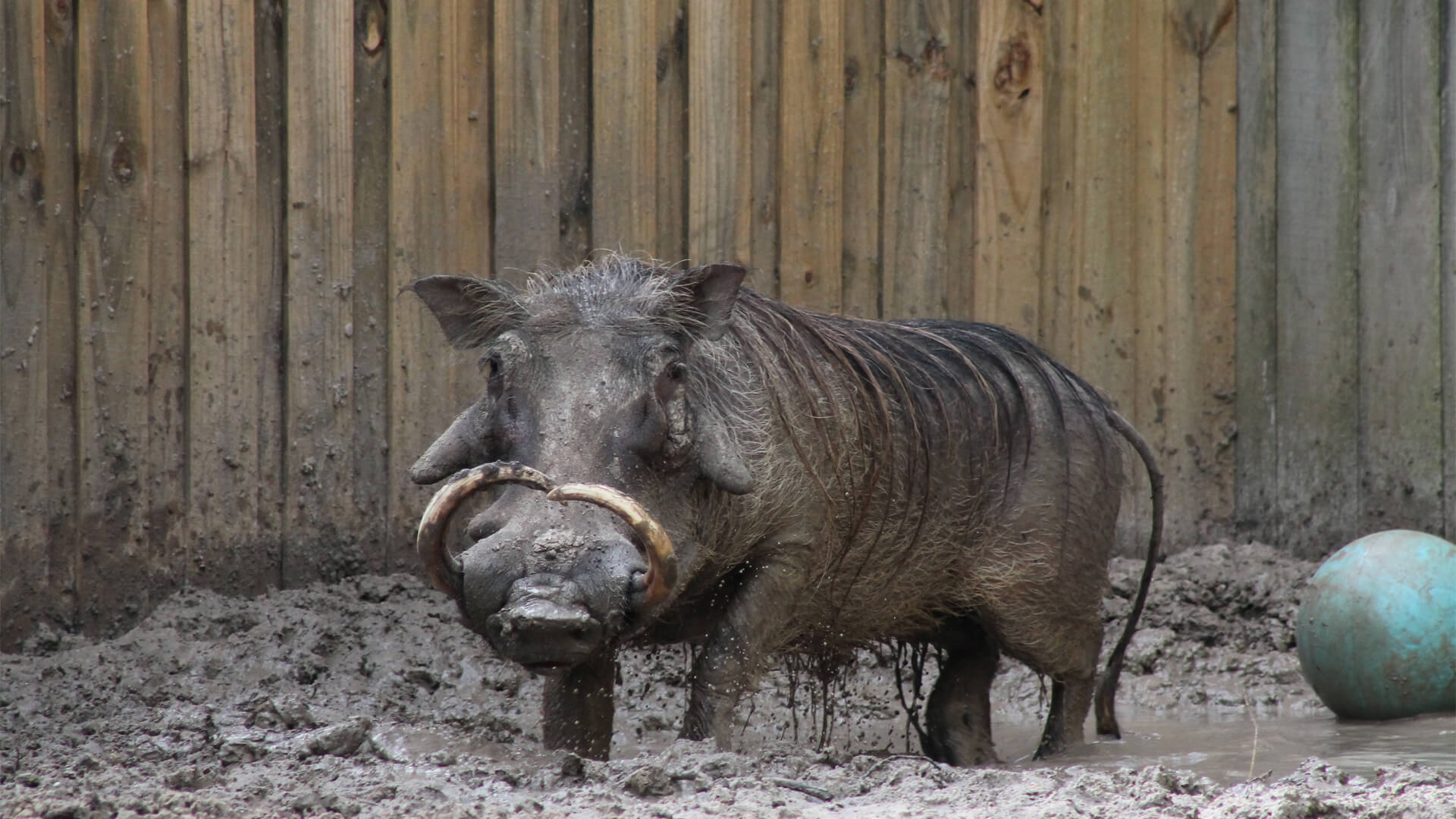
With their large warts, prominent tusks, luxurious mane, and long legs, warthogs are quite a sight!
The warts of the warthog serve an important purpose in protecting their face. When males fight or spar, these fatty pads protect them from each other's tusks, so they actually rarely injure each other.
This species is native to Africa, and although populations are doing well in the wild, they are susceptible to poaching, both for their meat and the ivory in their tusks. Both male and female warthogs have tusks, although the male's tusks and warts are larger and more pronounced than those of the female. Tusks are extensions of the warthog's teeth, with a set growing from the upper teeth and another set growing from the bottom teeth. The top set of tusks curve upwards, while the bottom set stick out horizontally. The bottom tusks are very sharp and are used for defense against predators. Warthogs have very minimal hair, although they do have a long mane running down their head and back. To stay cool, warthogs will spend time in burrows, which they often steal from aardvarks, or wallow in a mud hole. Female warthogs will remain together, in a group called a sounder, while males lead a solitary lifestyle.

The long legs of the warthog allows them to run up to 35 mph to escape from any predators that are pursuing them. You can often see them kneel down on their front legs and use their tusks and large snouts to dig up vegetation and insects when they are eating.

Brittany
Warthogs can actually run over 30 miles per hour. When running, their tail is completely erect.
Sub-Saharan Africa
Open savannahs, scrubland, open woodlands
Length: 4-5 feet | Weight: 150–300 lbs
Grass, berries, roots, tree bark, occasionally carrion
Lions, leopards, and other large predators
Flee
1–8 piglets per litter
Least Concern
12–18 years


